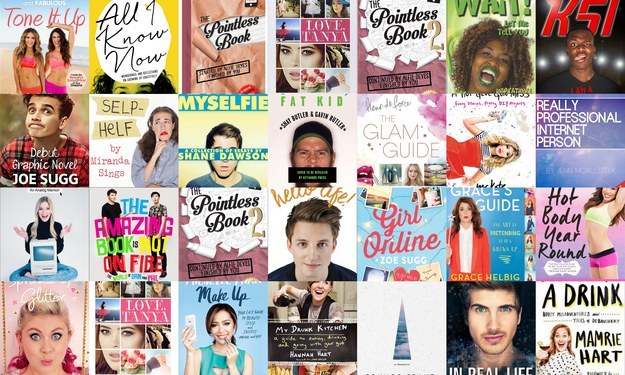E-marketing, or digital marketing as it has evolved into, is fairly new compared to more traditional methods of marketing. The first social media platform (Six Degrees) wasn’t even invented until 1997. That’s why, when it comes to digital marketing, many of us are stuck on the old-school concepts of just a website and email marketing (and for some, even that is a push). These ideas are early 2000s, a time when e-marketing was in its infancy.
Today, digital marketing is considered the primary marketing focus for most businesses. Companies are expected to be online and keep up with the constant changing landscape and trends.
E-marketing trends
One of the biggest marketing trends for the last 20 years has been social media. As of 2022 over 3.7 billion are actively using platforms, including Meta (Facebook, Instagram, WhatsApp), Twitter, and, most recently, TikTok. Aimed at, but not exclusively focused on, the Gen Z market, TikTok is one to look out for, with over 20 million people joining TikTok a month. It’s no surprise that brands are taking advantage of the free tools that allow millions of potential customers to be exposed to their e-marketing messages daily.
>See also: Fintech marketing – 6 tips for getting your message across
Social media
Despite so many people being online, marketing through social media allows businesses to play in the bigger leagues, showing up in searches and on people’s feeds in line with the most popular brands worldwide. Social media truly is the most cost-effective marketing tool in a business’s arsenal if they can create desirable content.
Moving on from traditional posting, in the early days of social, social media has now become a media rich environment with billions of videos, images, audio, text, and content pieces being generated a day, by both users and business. This has even gone on to VR (Virtual Reality). All are methods of communication that require unique content creation across different platforms. For example, TikTok is solely video, but Instagram is video and image. However, you can get away with just copy on Twitter. That’s why we always suggest creating a content plan for each platform that fits in with your long-term vs short-term marketing strategy, to streamline the process of having a steady flow of content ready to go.
How to use hashtags
However, the issue with social media is it’s so fast paced and overly saturated. Your content will easily get swallowed up in the sea of other posts. Instagram for example, has over 95 million posts a day. This is where the use of researched hashtags comes in. Hashtags will categorise your content into relevant sections on each platform, for others to search and post to, narrowing down your audience and allowing you to reach those actively interested in the type of content you are posting.
Target accounts to follow
You can also increase engagement by engaging with desired accounts first. Target accounts to like, follow and comment to, increasing the likely hood they will follow and interact back. Now, this may seem like a time-consuming process, but many automation features will streamline this, such as Oktopost and Phantombuster.
>See also: Edtech marketing strategy – how to stand out from the crowd
Paid social advertising
If the free social options aren’t getting you the results you are looking for, you can explore the paid options. Paid social and Google Ads, are audience and keyword focused, perfect for brand awareness and specific campaigns. You can set the budget of ads to fit your overall marketing budget while receiving help from potentially very low PPC (Pay Per Click) prices.
Having a website
Even if you are creating paid or non-paid content, you need a website that reflects the messages you are sharing online. Websites are the last stop before purchase, so having an easy to navigate and well-designed landing page is essential, for businesses that rely heavily on online sales.
Search Engine Optimisation
To gain visibility through search engines, including both Google and Bing, you need to focus on SEO (Search Engine Optimisation). This is done through both technical (behind the scenes) and content-based methods, targeting business-relevant keywords, and updating metadata, alt text and media. Once you have the traffic, you need to capture and retain the viewers’ attention, this can be done through several methods including pop-ups, and signups for specific content.
Email marketing
Email marketing is one of the more classic forms of digital marketing, with the first marketing email being sent in 1978 by Digital Equipment Corp to 400 recipients as a promotion of the company’s computers, which resulted in $13m in sales.
Email marketing has become much more personalised than other forms of digital marketing. You can split your audience into groups and target messages based on actions, interests and traits. For example, game companies can create email lists based on the subscriber’s console. Someone with a PS4 would not be interested in an email about Xbox offers. Emails may also be sent based on interactions on the website, such as an abandoned cart or recent purchases, and even real-world activity.
Unfortunately, with the ever-growing fear of hacking and immoral data use, people are worried about what data they share with companies. So please check your subscribers are down to accept marketing emails and make sure you have a data policy in place to remove old and unengaged data. Nevertheless, email marketing is stronger than social media and paid ads because of data ownership and tracking abilities.
Out-of-home advertising
Branching away from the wonders of the internet, digital marketing expands to “out of home’ marketing such as the 3D billboards at Piccadilly Circus or the digital posters you see as you descend into the London Underground. But these are costly, with the Piccadilly billboard costing about £10,000 a month and mainly designed for the biggest brands, as the billboard is seen by around 56 million people a year. This explains why Coca Cola is the brand that advertises the most at Piccadilly. Another example includes digital boards at bus stops. Digital screens in the Soho area of central London, for example, cost £700 for a fortnight of exposure.
>See also: 3 tech firms posting marketing jobs right now
Future of e-marketing
Where do we see e-marketing in the future? Well, it’s obvious that digital marketing rapidly changes, with fresh players being introduced daily. To keep up with the demand and to take advantage of the multiple marketing tools, AI (Artificial Intelligence) and automation will become the go-to tools to increase productivity and give you support to stay on top of things. Currently AI isn’t there yet to fully make people believe they are communicating with an actual person, which is, after all, is the best way to talk to your customers. So, balancing the human and automated process will be the key to success in the future.
April Ely is a digital marketing executive at Bacon Marketing. The Swindon-based marketing agency was nominated for SME marketing agency of the year at this year’s British Business Awards 2022
Read more
Marketing for tech start-ups – how to bootstrap your marketing






